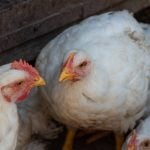One in seven Canadians is food insecure. I wondered: Just who are the food insecure throughout this vast nation? Where do they live and what is the relationship between food security, location, culture or income?
Those persons who are the most food insecure in Canada live in remote places. The population of Nunavut is 57 per cent food insecure compared to other areas such as Nova Scotia (15.3 per cent food insecure). The most food-secure provinces in Canada are B.C. and Quebec, both of which have policies to use provincially produced food first and have the economic advantage of robust food processing of local products.
Read Also

A great idea for repurposing grain bins
The Morrison family of southern Alberta have transformed old grain bins into unique guest cabins.
Multiple research studies clearly indicate that those persons identifying as Black, Indigenous, Arab or Western Asian and living in Canada are more food insecure than others. As are people who rent compared to folks who own homes.
In investigating food security, access to food came down to reliable income. Researchers have found that the financial point at which folks may become food insecure is when earnings are less than $40,000 per year. Access to fresh and nutritious food is limited with low income and is further compounded when combined with remote location and poor infrastructure such as roads.
Is charity the answer?
To date, there is not one speck of research evidence that food charity addresses food insecurity. Charity addresses the symptoms — which are poor nutrition and hunger — but it does not provide for a consistent ability of a person to provide for or to access food. And although many Canadians rely on food banks, this is not a long-term solution.
In Canada, more than a million of the food insecure are children. This means they are either hungry or do not have adequate access to nutritious foods. Seventeen per cent of these children come from a single-parent home, usually child(ren) and mother. That mom often does not have the same earning power as her male colleagues.
This brings us to the heart of the matter.
Food security hinges on income and reliable income in many homes is dependent on work and wage parity.
Regardless of location, women in Canada make, on average, 68 cents for every $1 — or one-third less the wage — compared to a male doing the exact same job. That 32-cent gap on a 40-hour week at $20/hour equates to $13,312 annually (which is just slightly under the $13,907 it is estimated to cost to feed a family of four in Canada in 2021). Wage parity would provide the access to food needed by these Canadian families.
One of the industries that leads the way in wage difference is agriculture.
In some areas of primary production, such as hand field work, there is evidence that women earn one-half of what males do. The employees on Canadian food-processing lines, with the exception of meat processing, are primarily women. And, they are often working for less — more than $10,000 less than their male colleagues. At the end of the food chain at food service, the waitress serving that great Canadian meal today is earning 17 per cent less than the male server doing the same job.
It is a sad irony that farmers and food processors strive to feed the nation and the world when they are contributing to the difference in wages between genders. Through this practice they are, by default, adding to the food-security crisis.
Change in food security must be led by industry — all industries. As agriculture and agri-food manufacturing employs one in seven persons, it should start here, in the fields and farm sheds, pens and processing floors, offices and boardrooms of our region and nation.
There is no historical, religious or cultural argument that stands against wage parity. All persons were created equal and are recognized as such in the Universal Declaration of Human Rights. Regardless of where a Canadian resides, they should be able to afford to eat. Agriculture and agri-food have a strong and vested interest in seeing wage parity achieved if they are to be part of the food-insecurity solution.
There is a direct link between reliable income and food access. Those persons in families of lone female parents, those who live in remote locations (including farms), those of specific cultures and those households that earn less than $40,000 a year are the most food insecure in Canada today.
If we desire all Canadians in every region, including those without food production, to have access to the nutritious food that we as farmers grow, then we have to provide them with nutritious, affordable, accessible and culturally appropriate options. This we can only achieve with attention to the fact that reliable income provides long-term food-security solutions. Agriculture and agri-food have the opportunity to be the agent for change toward the goal of putting food on the plate of every Canadian.
















